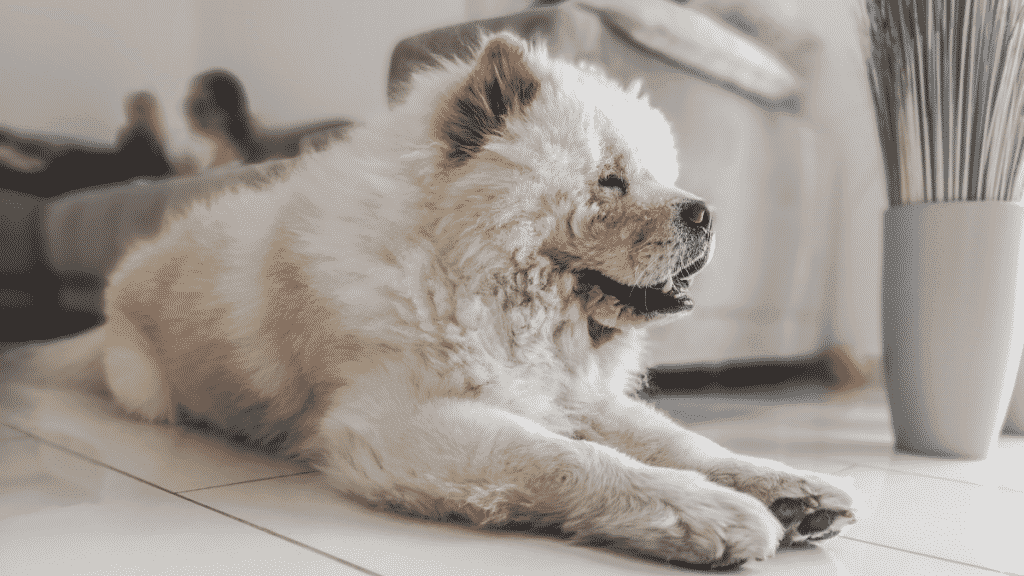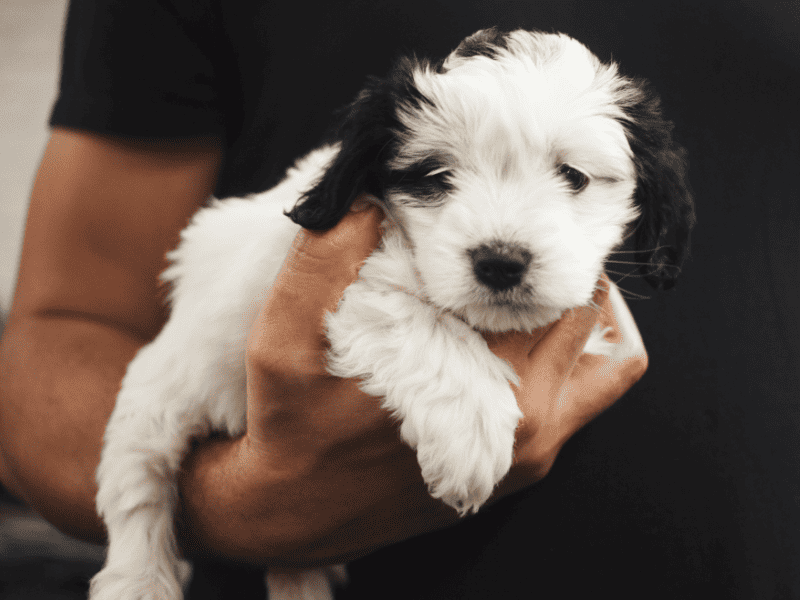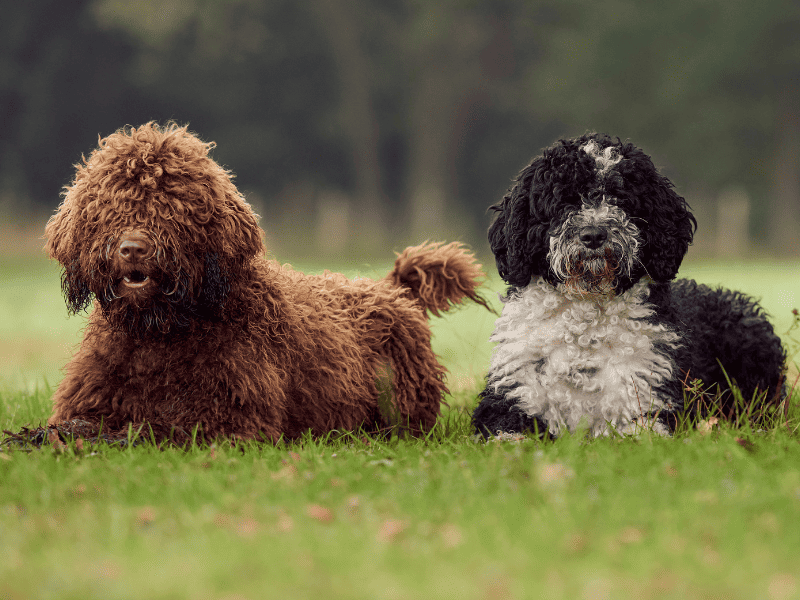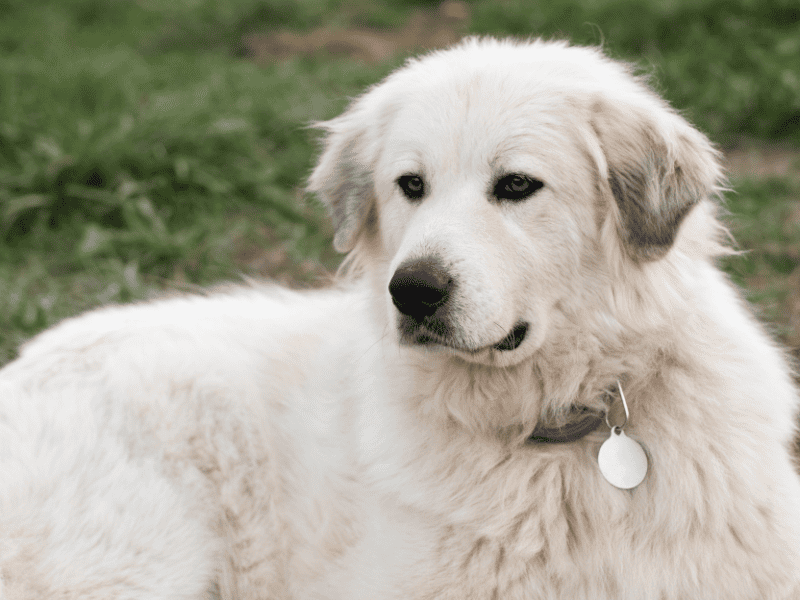All dogs shed — be it small, medium sized dogs or large dog breeds. However, some dogs shed a lot more than other dogs. Shedding is a natural and healthy process for dogs. There is no way to stop a dog from shedding, but Dr. Georgina Ushi Phillips, DVM shared some helpful tips on how to manage and reduce dog shedding.

Tips to Help Manage and Reduce Dog Shedding
Carry A Brush…Everywhere!
The best place to brush your dog is outside your home! That’s why it’s a good idea to carry a brush with you whenever you go outside with your dog!
Every trip to the dog park is a great opportunity to remove some loose hair from your dog!

A curry brush makes a great choice for this since they’re soft and lightweight so they can easily be thrown in a purse or other bag.
Many of them have handles that allow you to hold the brush in the same position that you’d pet your dog which makes it even easier to work this into your routine.
Consider Supplementing With Omega 3 Fatty Acids
Most commercial dog foods already include fatty acids but you could consider further supplementing your dog’s fatty acid intake.

Fatty acids can help improve overall skin and coat health and a healthier coat means less shedding.
Consider talking to your veterinarian about your dog’s fatty intake and whether or not you should add more.
Keep Your Dog Hydrated
Proper hydration can also help a dog’s coat stay strong, healthy, and off the floor so make sure your dog is getting at least an ounce of water per pound of body weight.
For a bigger 75 pound dog that’s more than half a gallon of water a day!

Create A Dedicated Fur Area
You may not always be able to stop your dog from shedding but you can control where they shed- at least some of the time.
Try giving your dog comfortable places to lay where loose dog hair can be easily collected and prevented from being spread around the rest of the house.
That doesn’t mean putting your dog’s bed in the garage but it does mean avoiding areas near doors that are constantly being opened and pushing air (and dog hair) through the house.
Being strategic with where your dog spends their naps can help reduce how much hair is in circulation in your home.

Consider A Canine Onesie
If you want to manage shedding for short periods of time, you can consider a canine onesie.
It looks as cute as it sounds and while these are traditionally used after surgery to prevent dogs from licking their incision site, there are versions designed to reduce shedding.
However, these shouldn’t be used long term, and your dog’s coat needs fresh air to stay healthy! But when it comes to visiting someone else’s home or keeping the car clean and canine onesie could be a creative solution.
Work With A Groomer

Professional grooming every 4-6 weeks can make a major impact on shedding. This is especially true for double-coated dogs that can really benefit from a professional groomer’s expertise and special tools.
Groomers can handle the major de-shedding sessions and leave the daily brushing and maintenance up to you. Not only will that save you time, but the combined effort will be more effective.
WORST SHEDDING DOG BREEDS
Whether it’s too high maintenance for you or you’ve got some slight allergies, knowing which dog breeds are perpetual shedders is a significant part of your research when you’re searching for your next pet.
LARGE DOG BREEDS
German Shepherd

The German Shepherd is a sweet, charming dog that can quickly become your best friend. If you’re looking for a high-energy dog, then look no further because this breed will fit right into your lifestyle.
You have to be prepared because the German Shepherd sheds A LOT! The thick coat needs to be groomed regularly so it doesn’t get matted or tangled. Grooming isn’t difficult but could require some patience on your part if you aren’t used to it.
Golden Retriever

They shed year round, but they will lighten up in the summer when the weather is warmer. Some groomers say that the lighter the coat, the more they shed. So if you are planning to adopt a cream or white Golden Retrievers, be prepared for a thicker undercoat that you’d need to brush at least once a week.
Siberian Husky

It is no surprise that this adorable, playful large dog breed is one of the worst shedders. Afterall, Huskies originated from Siberia where they wander around in extremely cold climates. Their shedding peaks in fall and spring. Regular brushing is required to keep their shedding under control.
Labrador Retriever

The Labrador Retriever is a popular breed that needs to be groomed regularly. These big dogs shed in the summer and spring when they lose their thicker, warmer coats. Some consider them to be one of the best dog breeds because they are affectionate and gentle family companions.
Newfoundland

Newfoundlands have amazing personalities, but if you plan to own one of these gentle giants, you need to know that drool and shedding will be part of your life. Despite the fact that they are double coated, Newfoundlands need to be brushed at least once a day.
If you’re committed to grooming your Newfie daily, then you should get over the shedding quickly.
MEDIUM SIZED DOGS
Welsh Corgi

The Welsh Corgi is another breed that needs to be groomed regularly. Despite their small size, corgis are double coated and shed year round. They do, however, shed a little less in the summer. That’s a pretty significant difference from the German Shepherd, even if it is only seasonal.
Chow Chow

Chow Chows shed daily because they’ve got a lot of coat. They require frequent grooming and shedding will be an issue whether it’s hot or cold outside. It’s important to make sure their coat remains healthy and well-groomed.
Shetland Sheepdog

There are two types of Shetland Sheepdogs. A rough-coated dog that sheds year round, and a smooth-coated dog that only sheds in the summer when they shed their puppy coats. The long hair requires regular brushing to keep it from getting tangled or matted.
SMALL DOGS
Pekingese

This small breed might be one of the more difficult dog breeds out there as far as grooming goes. Pekingese have long, thick coats that will require frequent grooming throughout their lives. If you’re thinking about adopting one of these little dogs , just remember that shedding is a daily event with them!
Pomeranian

These tiny dogs are heavy shedders! Though they are considered to be one of the best lap dogs, Pomeranians may not be ideal for allergy sufferers. They have thick, double coat that requires regular brushing and grooming to keep matting at bay.
CONTRIBUTOR
Dr. Georgina Ushi Phillips, DVM – veterinarian and veterinary writer, Not A Bully
ALSO READ


